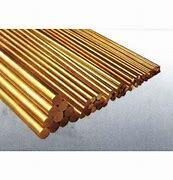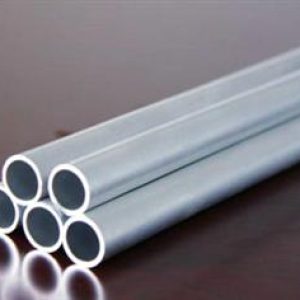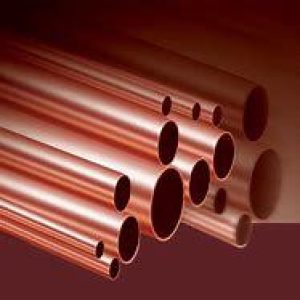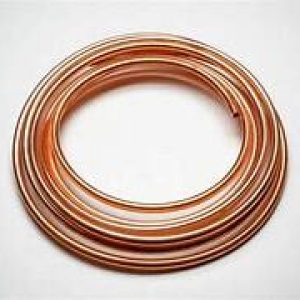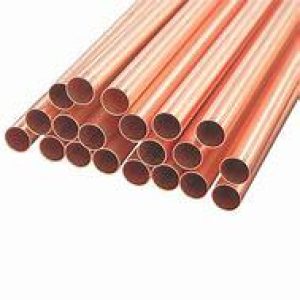Overview of Copper Pipe/Tube For Air Conditioners
Material: Copper Pipe/Tube For Air Conditioners is made from pure copper, which is a reddish-orange, malleable, and ductile metal. The most common types used for piping are Type K, Type L, and Type M, with varying thicknesses and applications.
Sizes: Copper pipes come in various diameters, typically ranging from 1/8″ to 4″ for residential and light commercial use. Sizes are denoted by their nominal diameter, not the actual inside diameter.
Applications: Copper is suitable for both water supply lines and gas lines (Type L or Type K). It’s also used in refrigeration systems, HVAC, and for conveying other fluids where corrosion resistance is crucial.
Features of Copper Pipe/Tube For Air Conditioners
-
Corrosion Resistance: Copper naturally resists corrosion and the formation of rust, making it ideal for water supply systems where purity is essential.
-
Heat Conductivity: Copper is an excellent conductor of heat, which is beneficial in heating systems and hot water distribution, allowing for efficient energy transfer.
-
Longevity: Copper pipes can last for decades, even up to 50 years or more with proper installation and maintenance.
-
Non-toxicity: Copper is safe for potable water systems as it does not contaminate the water.
-
Ease of Installation: Copper pipes can be easily cut, bent, and joined using soldering, compression fittings, or flare fittings, although soldering is the most common method for permanent connections.
-
Flexibility: While rigid, copper pipes can be bent to a certain degree without kinking, especially softer types like Type M.

(Copper Pipe/Tube For Air Conditioners)
Parameters of Copper Pipe/Tube For Air Conditioners
The copper pipe or tube used in air conditioners can vary depending on the type of system and design. However, some common copper pipe or tube features include:
1. Size: The size of the copper pipe is important when designing an air conditioner. A larger pipe may require more power to move air through it, which can increase its weight and heat loss.
2. Connections: Copper pipes are often used to connect the main air lines to other parts of the system such as units, fans, and pumps. Connections may be either straight or circular and will depend on the type of device being connected.
3. Material: The material used to create copper pipes and tubes also affects their performance. Solid copper is ideal for use in cold and hot environments because it provides excellent heat transfer capabilities and resistance to corrosion.
4. Finish: The finish of the copper pipe or tube can impact its appearance and durability. High-quality materials such as copper and metal pipes are generally recommended.
5. Building codes: Different countries have different building codes that apply to copper pipe or tube installations inair conditioners. Careful adherence to these codes can help ensure that the system is safe and functional.
Overall, copper pipes or tubes play a critical role in air conditioning systems by allowing air to pass through them easily and efficiently. Choosing the right size, connections, material, finish, and code will help ensure that the system operates smoothly and effectively.

(Copper Pipe/Tube For Air Conditioners)
Company Profile
Copper Channel is a trusted global metal material supplier & manufacturer with over 12-year-experience in providing super high-quality copper products and relatives products.
The company has a professional technical department and Quality Supervision Department, a well-equipped laboratory, and equipped with advanced testing equipment and after-sales customer service center.
If you are looking for high-quality copper materials and relative products, please feel free to contact us or click on the needed products to send an inquiry.
Payment Methods
L/C, T/T, Western Union, Paypal, Credit Card etc.
Shipment
It could be shipped by sea, by air, or by reveal ASAP as soon as repayment receipt.
FAQs of Copper Pipe/Tube For Air Conditioners
Q: Is Copper Pipe/Tube For Air Conditioners better than PEX?
A: Both have advantages. Copper is more durable and resistant to UV rays, but PEX (cross-linked polyethylene) is cheaper, easier to install, and more flexible. The choice depends on factors like budget, installation complexity, and personal preference.
Q: How do you join Copper Pipe/Tube For Air Conditioners?
A: Copper pipes are commonly joined using soldering (also known as sweating), where a fitting is fitted onto the pipe ends and solder is applied to create a leak-proof seal. Compression and push-fit fittings are alternatives for easier, no-solder connections.
Q: Can Copper Pipe/Tube For Air Conditioners freeze and burst?
A: Like any pipe material, copper can freeze and potentially burst if the water inside freezes and expands. Proper insulation and maintaining temperatures above freezing are necessary to prevent this.
Q: Does Copper Pipe/Tube For Air Conditioners need to be grounded?
A: In most plumbing applications, copper pipes do not require grounding. However, for electrical grounding purposes, specific codes and standards may dictate when and how copper pipes can be used as part of an electrical grounding system.
Q: How to Copper Pipe/Tube For Air Conditioners before soldering?
A: Before soldering, copper pipes and fittings should be cleaned with a wire brush or emery cloth to remove any oxidation, dirt, or oils. Flux is then applied to ensure a good bond between the pipe and the fitting during the soldering process.
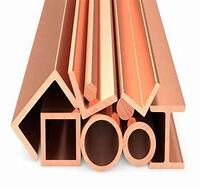
(Copper Pipe/Tube For Air Conditioners)
